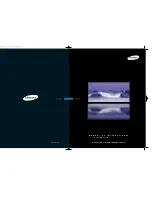
Events
The indicator function generates events and registers from the status changes of monitored signals. To
main event buffer is possible to select status “On” or “Off” messages.
Table. 5.5.3. - 106. Event codes of CIN function instances 1 – 5.
Event Number
Event channel
Event block name
Event Code
Description
6656
104
CIN1
0
Intermediate
6657
104
CIN1
1
Open
6658
104
CIN1
2
Close
6659
104
CIN1
3
Bad
6720
105
CIN2
0
Intermediate
6721
105
CIN2
1
Open
6722
105
CIN2
2
Close
6723
105
CIN2
3
Bad
6784
106
CIN3
0
Intermediate
6785
106
CIN3
1
Open
6786
106
CIN3
2
Close
6787
106
CIN3
3
Bad
6848
107
CIN4
0
Intermediate
6849
107
CIN4
1
Open
6850
107
CIN4
2
Close
6851
107
CIN4
3
Bad
6912
108
CIN5
0
Intermediate
6913
108
CIN5
1
Open
6914
108
CIN5
2
Close
6915
108
CIN5
3
Bad
5.5.4. mA Output control
The milliamp current loop is the prevailing process control signal in many industries. It is an ideal
method of transferring process information because current does not change as it travels from
transmitter to receiver. It is also much simpler and cost effective.
Bene ts of 4...20mA loops:
The 4-20 mA current loop is the dominant standard in many industries.
It is the simplest option to connect and con gure.
It uses less wiring and connections than other signals, greatly reducing initial setup costs.
Better for traveling long distances, as current does not degrade over long connections like
voltage.
It is less sensitive to background electrical noise.
Since 4 mA is equal to 0% output, it is incredibly simple to detect a fault in the system.
AQ-T216
Instruction manual
Version: 2.00
195
© Arcteq Relays Ltd
















































